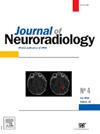近端分流器提前缩短导致动脉瘤内移位的抢救技术。
IF 3.3
3区 医学
Q2 CLINICAL NEUROLOGY
引用次数: 0
摘要
分流器(FDs)是一种成熟的动脉瘤解剖治疗方法[1-3]。然而,装置缩短后部署和随后迁移到动脉瘤可能会带来重大风险4,5。在本技术视频(视频1)中,我们报告了一例在左侧大脑中动脉M1段的夹层动脉瘤中使用管道柔性屏蔽部署的病例,在9个月的随访评估中,观察到近端段缩短并随后装置迁移到动脉瘤囊中。在这个过程中,我们成功地将微丝引导的微导管通过受损支架的近端部分。利用交换技术,取代了原始的输送导管,以促进晶格流分流器的部署。最终的血管造影证实两个支架之间有足够的重叠,并在母动脉中重新建立了腔内通畅。在类似的临床情况下,在缩短的假体内部署伸缩支架可能是一种可行的抢救策略。本文章由计算机程序翻译,如有差异,请以英文原文为准。
Rescue technique for proximal flow diverter foreshortening leading to dislodgement into aneurysm
Flow diverters (FDs) are an established treatment method for dissecting aneurysms.1, 2, 3 However, device shortening post-deployment and subsequent migration into the aneurysm may pose significant risks.4,5 In this technical video (Video 1), we present a case of Pipeline Flex Shield deployment for a dissecting aneurysm in the M1 segment of the left middle cerebral artery, where proximal segment shortening with subsequent device migration into the aneurysm sac was observed during the 9-month follow-up evaluation. In this procedure, we successfully advanced a microwire-guided microcatheter through the proximal portion of the compromised stent. Utilizing an exchange technique, the original delivery catheter was replaced to facilitate deployment of a Lattice flow diverter. Final angiography confirmed adequate overlap between the two stents with re-established luminal patency in the parent artery. n analogous clinical scenarios, telescoping stent deployment within the shortened endoprosthesis may constitute a viable salvage strategy.
求助全文
通过发布文献求助,成功后即可免费获取论文全文。
去求助
来源期刊

Journal of Neuroradiology
医学-核医学
CiteScore
6.10
自引率
5.70%
发文量
142
审稿时长
6-12 weeks
期刊介绍:
The Journal of Neuroradiology is a peer-reviewed journal, publishing worldwide clinical and basic research in the field of diagnostic and Interventional neuroradiology, translational and molecular neuroimaging, and artificial intelligence in neuroradiology.
The Journal of Neuroradiology considers for publication articles, reviews, technical notes and letters to the editors (correspondence section), provided that the methodology and scientific content are of high quality, and that the results will have substantial clinical impact and/or physiological importance.
 求助内容:
求助内容: 应助结果提醒方式:
应助结果提醒方式:


